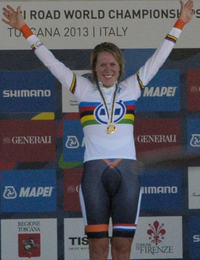
The Netherlands competed at the 1980 Summer Olympics in Moscow, USSR. In partial support of the American-led boycott of the 1980 Summer Olympics in protest over the Soviet Union's invasion of Afghanistan, the Dutch athletes boycotted the Opening Ceremony, and the Olympic Flag was used in place of Netherlands' national flag at medal ceremonies. 75 competitors, 57 men and 18 women, took part in 56 events in 10 sports.

The Netherlands competed at the 1972 Summer Olympics in Munich, West Germany. 119 competitors, 90 men and 29 women, took part in 72 events in 16 sports.

The Netherlands men's national basketball team represents the Netherlands in international basketball matches. The national team is governed by Basketball Nederland.

The Netherlands competed at the 1964 Summer Olympics in Tokyo, Japan. 125 competitors, 105 men and 20 women, took part in 57 events in 12 sports. Simon de Wit, who had represented his country in rowing at the 1936 Summer Olympics, was the Netherlands' Chef de Mission.

The Netherlands competed at the 1976 Summer Olympics in Montreal, Quebec, Canada. 108 competitors, 72 men and 36 women, took part in 58 events in 11 sports.

The Netherlands competed at the 1936 Summer Olympics in Berlin, Germany. 165 competitors, 145 men and 20 women, took part in 75 events in 15 sports.

The Spinoza Prize is an annual award of 1.5 million euro prize money, to be spent on new research given by the Dutch Research Council (NWO). The award is the highest scientific award in the Netherlands. It is named after the philosopher Baruch de Spinoza.

The Netherlands national water polo team represents the Netherlands in men's international water polo competitions and friendly matches. The team won bronze medals at the 1948 Summer Olympics and the 1976 Summer Olympics.

Kunst zij ons doel, or KZOD, is the name of an artists club in the Waag, Haarlem.

The New Hague School was a movement in the Dutch fine arts of the 1950s and 60s. It opposed the Cobra avant-garde movement and found its inspiration in 17th-century art and the experiences of the Barbizon School and the resulting Hague School.

Onze Kunst van Heden was an exhibition held in the winter of 1939 through 1940 at the Rijksmuseum in Amsterdam. Due to the threat of invasion in the years leading up to World War II, the Netherlands' government stored many items from the Rijksmuseum's permanent collection. The resulting empty gallery space was utilized by contemporary Dutch artists to exhibit and sell their art. It was organized by the director of the Rijksmuseum Frederik Schmidt Degener. The show was open to all artists, with each artist allowed to enter four pieces. 902 artists exhibited 3,200 works of art in 74 rooms and cabinets of the Rijksmuseum.
„De kunstenaar kan in tijden van maatschappelijke benauwenis weinig positiefs doen om rampen af te wenden, maar wel kan hij door mede te helpen nationale uitingen op het eigenaardigst naar voren te brengen het gemeenschapsbesef versterken. Wanneer de belangstelling van het publiek uitgaat naar deze manifestatie, die in zulk een omvang in Holland nog niet gezien is, dan zal menige kunstenaar zich op zijn beurt gesterkt voelen".
"The artist can do little positive in times of social distress to avert disasters, but he can, by helping to bring out national expressions in the most idiosyncratic way, strengthen the sense of community. When the public is interested in this event, which has not yet been seen to such an extent in Holland, many artists will feel strengthened in turn."







